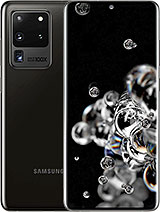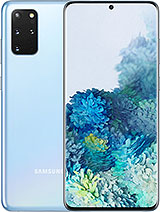Samsung Galaxy S20 Ultra Camera Review - 108 MP + 8K By The Hybrid Shooter
Hello, my friends in today's video we will take a look at the camera setup on brand new Samsung Galaxy s, 20 ultra s, 20 ultra has some very impressive specs when it comes to both Stills and video, just like with other recent high-end smartphones. The camera setup is one of the main highlights of Samsung's latest flagship in this video. We will try to find out whether 108 megapixel camera makes sense in a smartphone. How useful is the zoom functionality and whether the 8k video on a smartphone is a real deal or just a gimmick. Besides that, I will also go over the usual stuff, such as out of camera processing, ultra-wide lens and so on. Before we get to the image, quality and actual performance, let's take a look at some physical aspects.
What interests me personally, the most about this camera setup, is one over 1.33 inch size of the main sensor. Computing photography definitely has its limits, and if you want to move up, you just have to use larger sensor and better optics at some point associated with. That is one disadvantage, at least for me personally. At the moment, you can only have this camera setup in very large six point. Nine inch, phablet I, would love to have it in 5.8 inch smartphone, but that is probably not possible at the moment. The camera bump is quite substantial, but not out of proportions.
In my opinion, the main camera uses new ISO cell bright AMX, 108 megapixels, one over 1.33 inch sensor and about twenty-six millimeter full-frame equivalent less. This is the largest sensor that is currently being used in a smartphone by default. It combines 9 pixels together and takes 12 megapixel shots that works really well in this mode. The pixel density is pretty low, so the camera can capture a lot of actual details. So how about that 108 megapixel mode? To my surprise, it makes a massive difference in terms of the details.
It seems that this lens can render signal frequently more than just 12-megapixels EDD choose the most detailed stills that I have ever seen from a smartphone. So surprisingly, 108 megapixel mode is a real deal, as 20 ultra can also should Ross in the native app. Of course, I have to say that the rows are very, very impressive. The dynamic range is very solid, not just for a smartphone. You can recover a lot of information from both highlights and shadows.
It provides a lot of flexibility, and you can push it surprisingly far before it starts breaking down. Unfortunately, the rows are not available in 108 megapixel mode, which is a shame. I would really like to see those without in-camera processing. Also, worth mentioning is that this is relatively large sensor with F 1.8 lens, which means that it can actually blur the background. I generally like that, but it's some specific situations.
The depth of field might not be sufficient, but I. Don't think that it will be a major concern. Overall. I can say that this sensor is class above every other camera that I have ever tested in a smartphone. The stills quality is outstanding, especially if you should Ross the telephoto lens has actual 4 times optical zoom, and it can use sensor cropping up to 100 times.
I would say that the image quality is very good up to 5 times.10 times is suitable for social media and so on. Personally, I wouldn't use more than 10 times zoom. It is a good feature. It definitely increases the versatility of the whole camera setup and I. Actually like it a lot.
The ultra-wide lens is the least interesting here, as usually the image quality is the weakest on that one. It is pretty standard.12, megapixel, smartphone, ultra bite shots. The field of view match is about 13 millimeter full-frame equivalent, so we can always fit a lot of stuff in the frame. These stills are definitely usable for low and publishing, and they can make up for that image quality by providing dramatic field of view, I'm definitely glad to have an ultra-wide camera on any smartphone. Regarding the out of camera processing.
As expected, that is quite aggressive. There is a ton of over sharpening, which is the case with the vast majority of consumer devices. The colors are very vibrant and highly saturated as well, and the contrast is really high. It may sound like I'm complaining, but it actually works well for lower and social media. Publishing I acknowledge that this is what consumers prefer and ultimately, the majority of people will like this: over top processing, advanced users can use promote and edit perfect RAW files.
HDR functionality also works very well, so I'm generally happy with the whole process, sync. So how about the video? Let's address that 8k first I will say right away that, unlike the 108 megapixel stills mode, the 8 K is just a gimmick and a disappointment. First, there is a huge crop and the stabilization is pretty bad. In 8k there is some additional detail over 4k video, but that aggressive processing and sharpening just kills it most of the time. There is no real reason to use it, and that is all that I have to say about the 8k.
The 4k video looks good for a smartphone, but I can't really say that it is excellent. Just like with a full-frame cameras when a use, super-high resolution sensor, you have to sacrifice video quality because of the processing requirements. That is why 24 megapixels Panasonic s 1, is better video camera than 47 megapixels Panasonic s, 1 R. The video from all three cameras is completely fine for social media and consumer use. You can also use film Pro to bypass the sharpening and do that yourself in post-production, which helps a lot, but image quality can compete with proper cameras or even some other consumer devices.
I am personally ok with it. I am aware that it is the price for excellent stills quality, so I can accept that ultra-wide video and the video from telephoto lens actually has similar image quality. It is good for a smartphone, definitely usable, but not mind-blowing. The autofocus on the main camera is okay. In my opinion, I haven't had any issues in the real world use in extreme situations.
When focusing from close distance to infinity, it might be just a bit slower than the iPhone, for example, but it is definitely more than good enough for all-around use on the ultra-wide camera. Everything is in focus all the time because of the depth of field, so the autofocus is obviously not a problem there. On the telephoto lens, I have had some issues, video to focus again in realistic real-world situations. It won't be an issue overall, the autofocus is, in my opinion, fine. It has been improved by firmware update, and it works really well.
Overall, the image stabilization is very good or maybe even great, on the main camera I was genuinely surprised. How well it can smooth out the wall kink. It is more than sufficient for static shots and panning. It is also very important for 108 megapixel mode, where you can easily see the shaking. Furthermore, it is also very good on the ultra-wide camera that one is pretty easy to stabilize digitally.
Here again, even the walking looks good on the telephoto camera. It depends on the zoom, for video I would use it handheld, maybe up to about 4 times zoom. The night mode also works pretty well on the main camera. It can provide results usable for most types of digital publishing. In combination with at large sensor, the images are relatively clean in lower dynamic range scenes unless you're shooting in complete darkness on the ultra-wide and telephoto cameras.
It is not that great, which is to be expected. The camera app is traditionally a strength of Samsung smartphones. The interface is easy to navigate and all the settings are easy to find I like how you can customize the modes and move them around. The Rommel's is perfect here. You have all the manual settings, and it is the only mode where you can shoot Ross a downside is that you can only use promote with the main camera.
There is also pro video modes where you can use manual. Video settings. If you are serious about the video I, still recommend using film Pro that still provides the highest nitrate and importantly, it allows you to turn off the internal sharpening. Unfortunately, Samsung won't, let us shoot 8k, or you study photo lesson film Pro. That is a real shame.
The night mode is also separate, unlike on the iPhones, which is probably what I prefer. The front-facing camera has huge 40 megapixel resolution, which is completely unnecessary. In my opinion, the angle is also very narrow for a selfie camera, so I would be happy to trade. Those megapixels for wider lens. Regarding some of the stuff that indirectly affects the shooting experience.
First, I have to mention the screen. That is really excellent. It is 6.9 H, dynamic, AMOLED screen with 541 PPI, very good brightness, HD, Arts and Plus capabilities, and so on. Using this screen for anything is a pure joy, and that includes the photography and videography as well. Of course, a big advantage over the iPhone is USB-C, port and micro SD card slot.
I still prefer taking out the SD card and using the card reader for a larger amount of files. For me, it is just more convenient and using the iPhone way. It is also very cheap way to increase the storage space. Although the SD cards are quite slow compared to internal memory. The battery life on this Enos version is a disappointment.
For me, it is ok, it will last full day of usage, but I expected much more from five thousand William hour battery. So far, it is far from matching my iPhone 11 Pro with 3000 William hour battery. To sum up, I can say that I am happy with the camera setup on estimate. The ultra, but there is a real forum, meant what I like the most is the main camera it chooses the best deals that I have ever seen from any smartphone. Surprisingly, 108 megapixel mode makes a huge difference in terms of the details, and it is a real deal.
Ultra-wide camera is OK comparable with other high-end smartphones, so no complaints here. On the other hand, the video is okay, but nothing special. To be honest, the 8k mode is not very useful, and I would generally say that it is a gimmick. The zoom functionality is nice, but I would be just fine with normal 50 is millimeter lives. Overall, I can say that the main sensor really pushes this camera setup closer to certain types of proper cameras, I'm personally, very interested to see how close it can get to one inch, sensor, cameras or maybe even something larger, so I will make separate video about that.
Of course, iPhone 11 Pro is still the main benchmark for smartphone cameras, so I'll also make this comparison soon. So that's it for this video. Thank you for watching. I hope that you liked this video and that you found it to be useful, stay tuned for more videos and maybe consider subscribing if you don't want to miss my future content, I appreciate our feedback in form of thumbs up or thumbs down. If you would like to ask anything or share opinion, please do some in the comment section and see you next time.
Source : The Hybrid Shooter



























